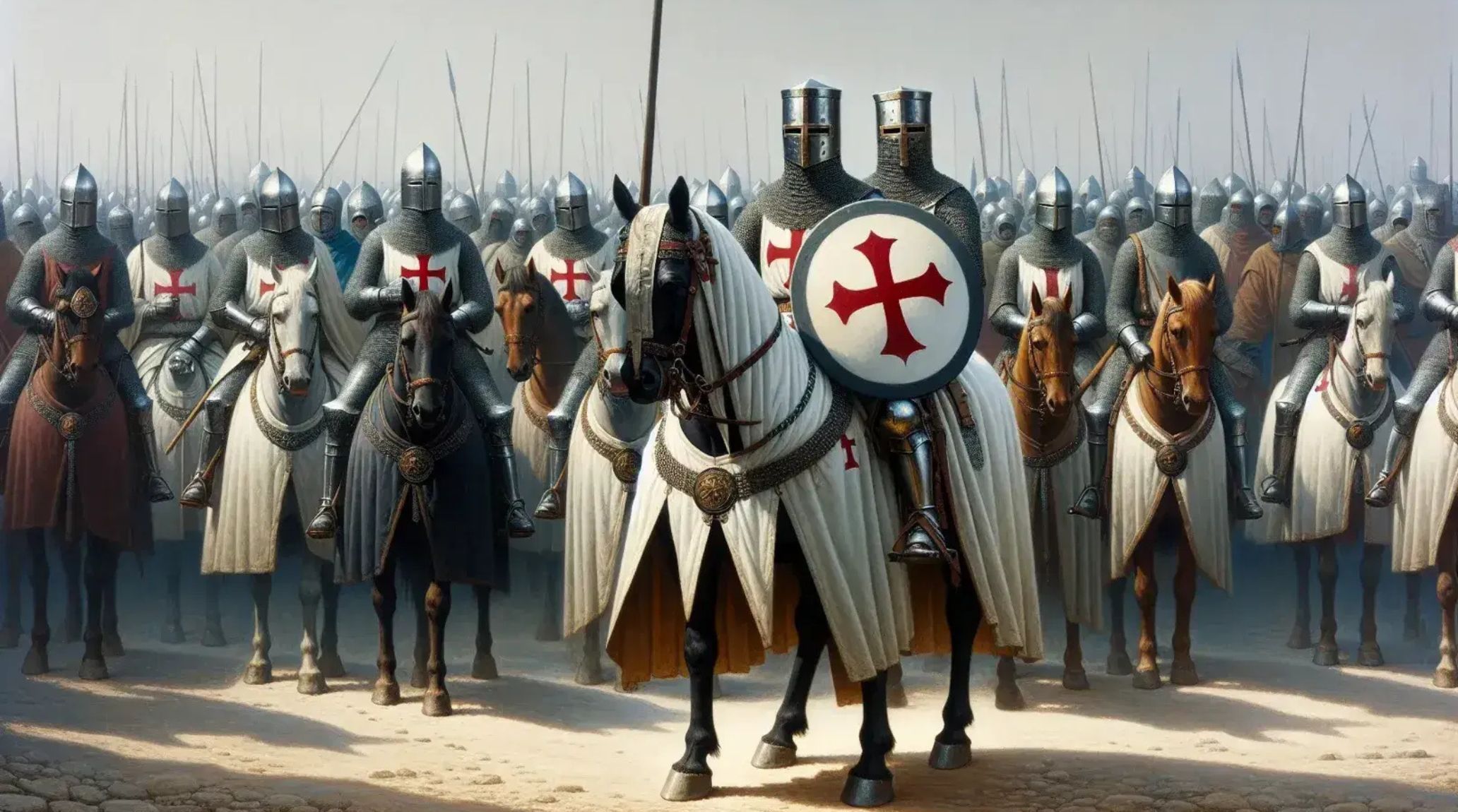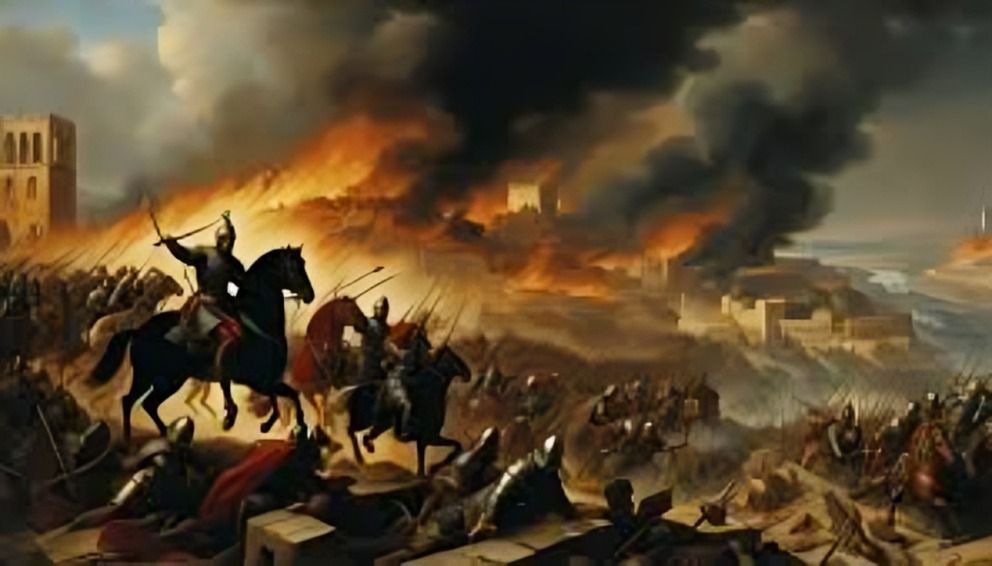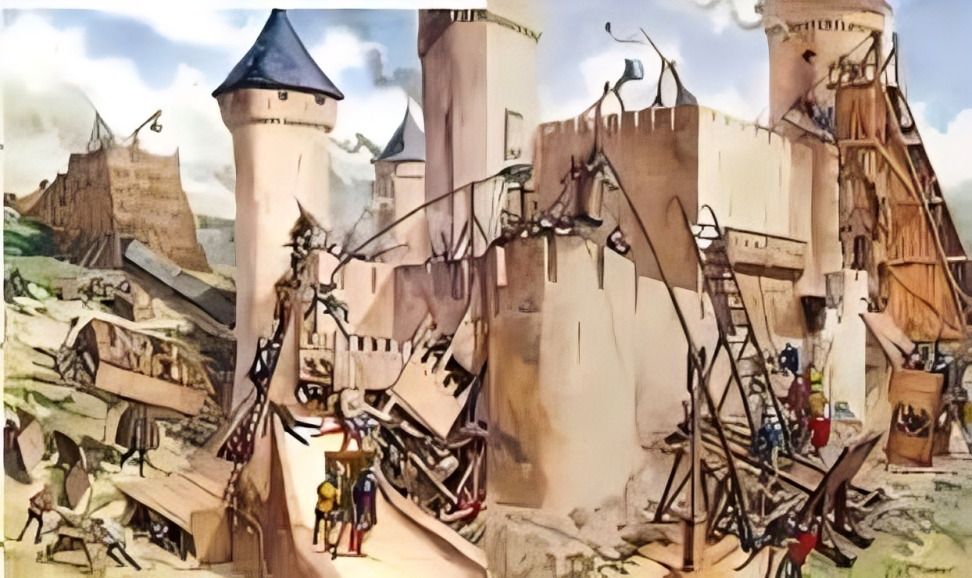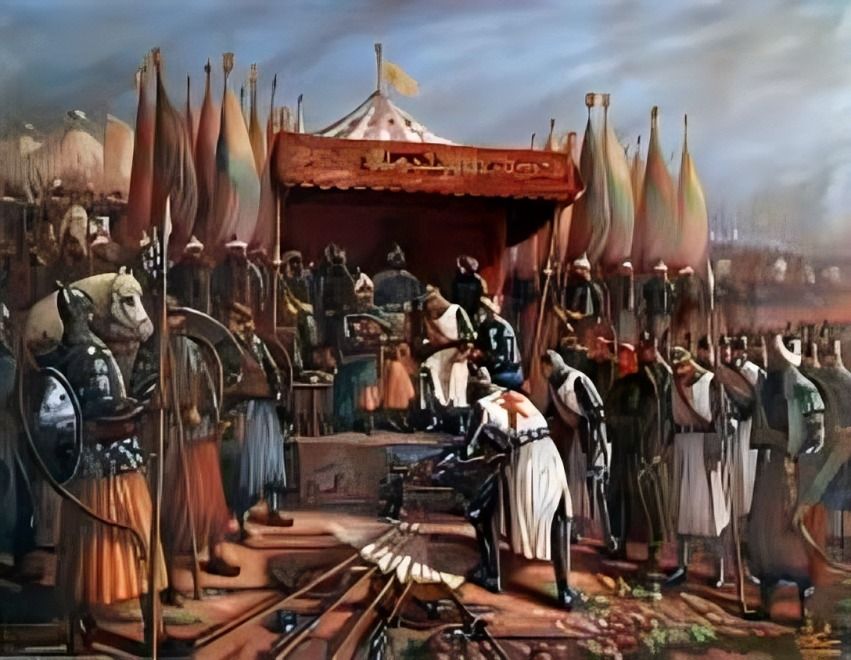
“
The Crusades are a pivotal chapter in medieval history, characterized by religious fervor, military campaigns, and cultural exchange between East and West. Spanning several centuries, these holy wars were initiated by the Catholic Church to reclaim Jerusalem and other holy sites from Muslim control. In exploring 20 fascinating facts about the Crusades, we uncover the complexities and enduring legacy of these transformative conflicts that shaped the course of civilizations.1
”
The First Crusade was initiated by Pope Urban II in 1095 at the Council of Clermont, calling for Christians to reclaim Jerusalem from Muslim control. This began a series of religious and military campaigns that spanned centuries.1
The Knights Templar, founded in 1119, became one of the most renowned military orders during the Crusades. Tasked with protecting pilgrims traveling to the Holy Land, they amassed considerable wealth and influence across Europe. 2
Saladin, a Kurdish Muslim leader, rose to prominence in the late 12th century and recaptured Jerusalem from the Crusaders in 1187. His chivalrous conduct and military prowess left a lasting legacy, making him a legendary figure.3
Richard I of England,led the Third Crusade alongside King Philip II of France and Holy Roman Emperor Frederick Barbarossa. Despite not reclaiming Jerusalem, his reputation as a brave knight endures, symbolizing medieval chivalry and courage. 4

The Fourth Crusade, diverted from its original purpose, culminated in the sack of Constantinople in 1204. This event significantly strained relations between Eastern and Western Christianity, contributing to the Great Schism.
In 1212, thousands of children and young adults embarked on a crusade to the Holy Land, believing their innocence would prevail. Tragically, many were sold into slavery or died on the journey, highlighting the harsh realities. 5
Besides the Knights Templar, other military orders like the Hospitallers and Teutonic Knights played vital roles in the Crusades. They combined religious devotion with military prowess and administrative skills, shaping the course of the Crusader states. 6
The Crusades stimulated European economies through increased trade with the East and the development of financial mechanisms like letters of credit. This contributed to the rise of banking systems, enhancing economic growth and commerce. 7
Crusaders brought back knowledge of science, medicine, and architecture from the Middle East. These influences shaped European culture and advancements during the medieval period, laying the groundwork for the Renaissance. 8

The Crusades advanced European siege warfare tactics, leading to innovations in fortifications and weaponry. These developments would shape military strategy for centuries, influencing battles and conflicts across Europe.
While religious fervor was paramount, the political ambitions of European monarchs and nobles often drove participation in the Crusades. They sought to expand their territories and influence, intertwining religious and political motives. 9
The Crusades profoundly affected the Byzantine Empire, with alliances formed and strained. Ultimately, these events weakened Byzantine authority in the region, contributing to its eventual decline and fall. 10
The Third Crusade concluded with the Treaty of Jaffa in 1192, granting Christian pilgrims access to Jerusalem. It also secured several coastal cities for the Crusaders, ensuring a temporary peace between warring factions. 11
The Crusades increased the papacy's authority in Europe, as popes exerted significant influence over kings and nobles mobilizing for these holy wars. This enhanced the Church's power and reach across the continent. 12

Despite attempts at cooperation, the Crusades also left a legacy of religious intolerance and conflict. This tension between Christians, Muslims, and Jews persisted for centuries, shaping future interactions and prejudices.
The Knights Hospitaller defended the Crusader states and established hospitals to care for the sick and injured. They provided aid regardless of faith, showcasing a rare aspect of medieval humanitarianism. 13
The Crusades inspired epic poetry like the "Song of Roland." These events influenced European art and literature with tales of heroism and adventure in distant lands, enriching cultural and literary traditions. 14
By the late 13th century, the Crusader states in the Holy Land, including Jerusalem, had fallen to Muslim armies. This marked the end of Crusader presence in the region, closing a significant chapter in medieval history. 15
Crusaders engaged in intricate diplomatic negotiations with Muslim leaders, sometimes resulting in temporary truces. These alliances aimed at mutual benefit, demonstrating the complex interplay of war and diplomacy. 16
The Crusades continue to be studied and debated in modern times. They offer insights into the religious, political, and cultural dynamics that shaped medieval Europe and the Middle East, providing valuable lessons for contemporary society. 17


